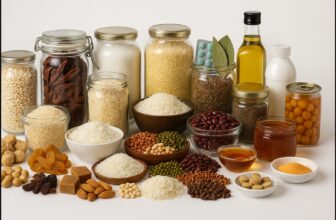In India, food traditions are deeply tied to taste. Sweet, spicy, and tangy flavors dominate everyday meals. Yet, when it comes to health, taste often takes a back seat. Some of the healthiest juices in India are also the ones people avoid because they taste bitter, pungent, or simply strange. These drinks come from Ayurveda, traditional practices, or natural remedies, and while most people dislike them, they continue to exist in Indian households, yoga centers, and health shops.
These juices are often packed with bioactive compounds that target conditions very common in India such as diabetes, anemia, digestive issues, and skin problems.
Below are 20 juices that most people avoid for taste, but still rely on for their proven health benefits.
Bitter and Medicinal-Tasting Juices
1. Karela (Bitter Gourd) Juice
- Extremely bitter taste, hard to swallow even in diluted form.
- Rich in charantin and polypeptide-p, compounds known to reduce blood glucose levels. Also contains vitamin C and folate. Doctors in India often recommend it for Type 2 diabetes management.
No other juice gets the same level of rejection as karela. Its bitterness makes most people grimace, yet it remains the most recommended for diabetes control. Karela juice improves liver function and reduces blood sugar spikes, which is why Ayurvedic doctors often prescribe it to patients struggling with lifestyle diseases.
2. Neem Juice
- Sharp, bitter, and leaves an aftertaste.
- Contains azadirachtin and nimbin, natural antifungal and antibacterial compounds. Used in Ayurveda for liver detox and skin conditions such as eczema and acne.
Neem is almost synonymous with bitterness in Indian culture. While chewing neem leaves is an old tradition during festivals like Ugadi, neem juice goes beyond unpleasant, it is almost impossible to swallow without making a face. Despite this, neem juice is used to boost immunity, treat acne, and improve gut health.
3. Aloe Vera Juice
- Slimy texture and bitter taste.
- Contains acemannan, a polysaccharide that aids digestion and supports gut lining repair. High in antioxidants like vitamins A, C, and E, making it valuable for skin and hair health.
Aloe vera gel feels soothing on skin, but its juice is not pleasant at all. Still, it is marketed as a natural solution for digestion, hair growth, and detoxification. Most Indians buy bottled versions but rarely enjoy the taste.
4. Giloy (Guduchi) Juice
- Strong herbal bitterness with earthy undertones.
- Rich in tinosporaside and alkaloids that enhance white blood cell activity. Commonly prescribed in Ayurveda for fever, liver health, and as an immunomodulator.
Giloy shot to popularity during the COVID-19 pandemic as an immunity booster. Its taste is sharp, earthy, and bitter, making it hard to drink daily. Even so, giloy continues to be consumed in households where traditional remedies are valued for fever, respiratory health, and overall immunity.
5. Methi (Fenugreek) Juice
- Bitter, pungent, and difficult to drink plain.
- Contains soluble fiber (galactomannan) that slows carbohydrate absorption, lowering blood sugar. Also has saponins that reduce LDL cholesterol.
Fenugreek seeds are widely used in Indian cooking, but their juice is different. Still, fenugreek juice is linked to controlling cholesterol and blood sugar. Some people add lemon or honey to reduce the bitterness.
Strong Herbal and Leafy Juices
6. Wheatgrass Juice
- Raw, grassy taste that feels like drinking blended grass.
- High in chlorophyll, iron, and amino acids. Used in Indian naturopathy clinics for anemia and detoxification. Improves red blood cell count.
Urban health enthusiasts in India have made wheatgrass juice a trend, but no one drinks it for taste. The reason people still drink it is detoxification, wheatgrass is packed with chlorophyll, vitamins, and minerals.
7. Coriander Juice
- Overpowering herbal flavor when concentrated.
- Contains linalool, which supports kidney health and helps reduce water retention. Rich in vitamin K and antioxidants, useful in managing urinary infections.
Indians love coriander leaves in chutneys, but in juice form, the flavor is extremely overpowering. Coriander juice helps kidney function, reduces bloating, and works as a natural detox. Still, very few people prefer it plain.
8. Tulsi (Holy Basil) Juice
- Pungent and spicy, not palatable as plain juice.
- Contains eugenol, a compound with anti-inflammatory and antimicrobial properties. Traditionally consumed for cough, asthma, and seasonal flu in India.
Tulsi holds a sacred place in Indian households, but its juice is a challenge to drink. Pungent and bitter, tulsi juice is consumed for respiratory health, especially during seasonal coughs and colds.
9. Mint Juice (Raw, Not Pudina Sharbat)
- Sharp, grassy flavor compared to sweetened mint drinks.
- Contains menthol, which relaxes the digestive tract and provides a cooling effect. Used in Ayurveda for gas, indigestion, and summer heat relief.
Pudina sharbat with sugar and lemon is refreshing, but raw mint juice is very different. Its grassy sharpness is unappealing, which is why it is rarely consumed plain. Instead, it is sometimes used in Ayurvedic treatments for digestion and cooling.
10. Spinach Juice
- Earthy, slightly metallic taste.
- Packed with non-heme iron and folate. Also rich in lutein and zeaxanthin, antioxidants that protect eye health, especially important in a country with high rates of screen-related eye strain.
Spinach is loved in palak paneer but disliked in pure juice form. However, spinach juice provides a rich dose of iron and vitamins. It is often combined with apple or carrot to make it drinkable.
Root, Stem, and Spice-Based Juices
11. Turmeric Juice (Raw Haldi)
- Bitter and earthy when consumed raw.
- Contains curcumin, a strong anti-inflammatory compound studied for arthritis, heart disease, and metabolic syndrome. Traditionally consumed with black pepper to increase absorption.
Turmeric is a staple in Indian kitchens, but raw turmeric juice tastes bitter, pungent, and earthy. Wellness circles now promote “haldi shots” for their anti-inflammatory and antioxidant benefits. Indians traditionally mix it with milk or honey to make it tolerable.
12. Ginger Juice (Concentrated)
- Spicy and burns the throat.
- Rich in gingerols and shogaols, compounds that reduce nausea, improve digestion, and act as anti-inflammatory agents. Commonly used in Indian households for colds and sore throats.
Ginger is widely used in chai, but drinking its juice alone is a different experience, it burns the throat and feels too spicy. Despite this, ginger juice is a go-to remedy for colds, nausea, and digestion issues.
13. Garlic Juice
- Extremely pungent with a lasting odor.
- Contains allicin, which lowers blood pressure and cholesterol. Widely studied for heart health and immunity enhancement.
Garlic adds depth to Indian curries, but garlic juice alone is harsh, very pungent, and leaves an unbearable aftertaste. Yet, some people drink it for lowering blood pressure, cholesterol, and boosting immunity.
14. Amla (Indian Gooseberry) Juice
- Sour, bitter, and astringent at once.
- One of the highest natural sources of vitamin C (600 mg/100 g). Also contains polyphenols that reduce oxidative stress. Boosts iron absorption and improves hair strength.
It’s a powerhouse of Vitamin C and considered one of the best natural immunity boosters in Ayurveda. Still, most people dilute it with water and honey.
15. Ash Gourd (Winter Melon) Juice
- Bland, watery, and slightly bitter.
- Rich in potassium and calcium. Used in yoga diets for its cooling properties and as a natural diuretic. Supports kidney function and hydration.
Even though the taste is off-putting, it is a key part of yogic diets, recommended for its cooling and detoxifying effects.
Regional and Traditional Juices
16. Bael (Wood Apple) Juice
- Thick, sticky texture and strong smell.
- Contains tannins that protect the intestinal lining. Traditionally used to manage diarrhea, heatstroke, and digestive problems in rural India.
It is known for its cooling effect and ability to treat stomach problems like diarrhea and constipation. It remains popular in rural India.
17. Jamun (Black Plum) Juice
- Sour and astringent, stains the tongue purple.
- Rich in jamboline and ellagic acid, compounds that help regulate blood sugar. Also improves oral health by reducing bacterial growth.
Jamun is seasonal and loved as a fruit, but its juice is very sour and leaves the tongue purple. Still, it is used for managing diabetes and improving digestion.
18. Triphala Juice
- Bitter, sour, and pungent mix of amla, haritaki, and bibhitaki.
- Rich in tannins, gallic acid, and polyphenols. Promotes digestion, reduces constipation, and detoxifies the liver. A staple in Ayurvedic formulations.
19. Bottle Gourd (Lauki) Juice
- Bland and watery, sometimes slightly bitter.
- High in water content, potassium, and fiber. Helps regulate blood pressure and is often recommended in weight-loss diets.
Bottle gourd is popular in sabzi but disliked as juice because of its bland and unpleasant taste. Still, it is consumed by those looking for weight loss or cooling drinks in summer.
20. Beetroot Juice (Concentrated)
- Earthy and strong aftertaste.
- Contains dietary nitrates that convert to nitric oxide, lowering blood pressure. Rich in folate and iron, making it valuable for anemia patients in India.
Beetroot juice is rich in iron but has a strong earthy flavor that many find hard to drink plain. It’s often mixed with carrot or apple. Despite the taste, athletes and doctors recommend it for stamina and blood pressure regulation.
Taste Rating vs Health Benefit
| Juice | Key Compound / Nutrient | Health Benefit in India Context | Taste Rating (1-5) |
|---|---|---|---|
| Karela Juice | Charantin, polypeptide-p | Diabetes management | 1 |
| Neem Juice | Azadirachtin, nimbin | Skin, liver detox | 1 |
| Aloe Vera Juice | Acemannan, antioxidants | Digestion, skin repair | 2 |
| Giloy Juice | Tinosporaside, alkaloids | Immunity, fever, liver | 2 |
| Methi Juice | Galactomannan, saponins | Cholesterol, blood sugar | 2 |
| Wheatgrass Juice | Chlorophyll, iron | Anemia, detox | 2 |
| Coriander Juice | Linalool, vitamin K | Kidney, urinary infections | 2 |
| Tulsi Juice | Eugenol | Respiratory health | 2 |
| Mint Juice (Raw) | Menthol | Digestion, cooling | 2 |
| Spinach Juice | Iron, lutein, zeaxanthin | Eye health, anemia | 3 |
| Turmeric Juice | Curcumin | Anti-inflammatory, arthritis | 2 |
| Ginger Juice | Gingerols, shogaols | Digestion, anti-inflammatory | 2 |
| Garlic Juice | Allicin | Heart health, blood pressure | 1 |
| Amla Juice | Vitamin C, polyphenols | Immunity, hair, anemia | 2 |
| Ash Gourd Juice | Potassium, calcium | Cooling, kidney support | 2 |
| Bael Juice | Tannins | Heatstroke, diarrhea | 2 |
| Jamun Juice | Jamboline, ellagic acid | Blood sugar, oral health | 3 |
| Triphala Juice | Gallic acid, polyphenols | Digestion, detox | 1 |
| Bottle Gourd Juice | Potassium, fiber | Blood pressure, weight loss | 2 |
| Beetroot Juice | Nitrates, folate, iron | Blood pressure, anemia | 3 |
Conclusion – Disliked for taste but prescribed in Ayurveda for health
Taste is deeply valued in Indian culture, but when it comes to health, bitter and gross-tasting juices have their place. They are often seen as natural medicines rather than everyday beverages. Many households find ways to mask their flavors, mixing with honey, lemon, or other fruit juices, to make them tolerable.
While most people won’t drink these for enjoyment, their benefits in managing diabetes, improving digestion, detoxifying the body, and boosting immunity make them impossible to ignore. In the end, they represent India’s long-standing belief that health sometimes comes before taste.




